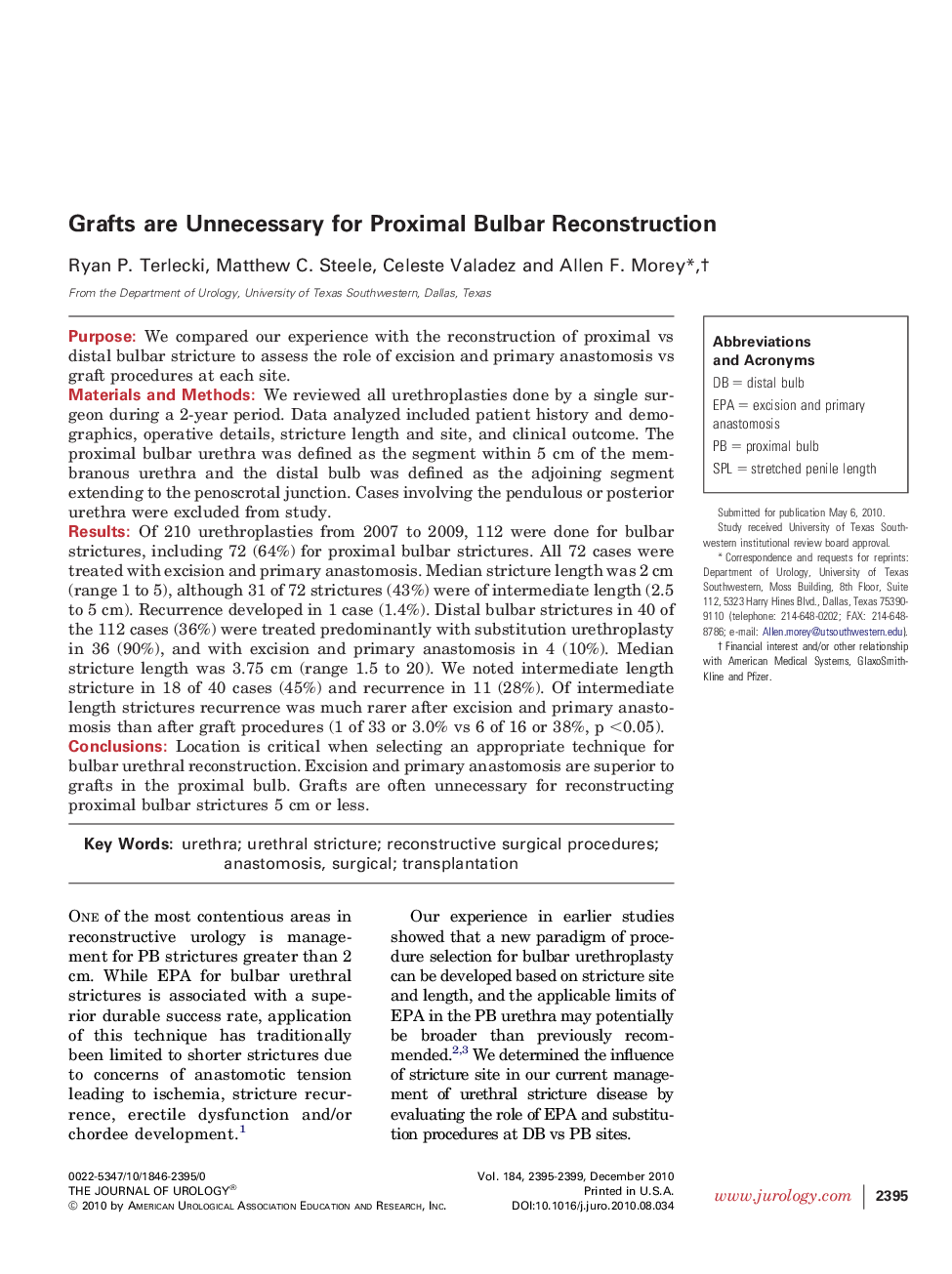| Article ID | Journal | Published Year | Pages | File Type |
|---|---|---|---|---|
| 3872960 | The Journal of Urology | 2010 | 5 Pages |
PurposeWe compared our experience with the reconstruction of proximal vs distal bulbar stricture to assess the role of excision and primary anastomosis vs graft procedures at each site.Materials and MethodsWe reviewed all urethroplasties done by a single surgeon during a 2-year period. Data analyzed included patient history and demographics, operative details, stricture length and site, and clinical outcome. The proximal bulbar urethra was defined as the segment within 5 cm of the membranous urethra and the distal bulb was defined as the adjoining segment extending to the penoscrotal junction. Cases involving the pendulous or posterior urethra were excluded from study.ResultsOf 210 urethroplasties from 2007 to 2009, 112 were done for bulbar strictures, including 72 (64%) for proximal bulbar strictures. All 72 cases were treated with excision and primary anastomosis. Median stricture length was 2 cm (range 1 to 5), although 31 of 72 strictures (43%) were of intermediate length (2.5 to 5 cm). Recurrence developed in 1 case (1.4%). Distal bulbar strictures in 40 of the 112 cases (36%) were treated predominantly with substitution urethroplasty in 36 (90%), and with excision and primary anastomosis in 4 (10%). Median stricture length was 3.75 cm (range 1.5 to 20). We noted intermediate length stricture in 18 of 40 cases (45%) and recurrence in 11 (28%). Of intermediate length strictures recurrence was much rarer after excision and primary anastomosis than after graft procedures (1 of 33 or 3.0% vs 6 of 16 or 38%, p <0.05).ConclusionsLocation is critical when selecting an appropriate technique for bulbar urethral reconstruction. Excision and primary anastomosis are superior to grafts in the proximal bulb. Grafts are often unnecessary for reconstructing proximal bulbar strictures 5 cm or less.
